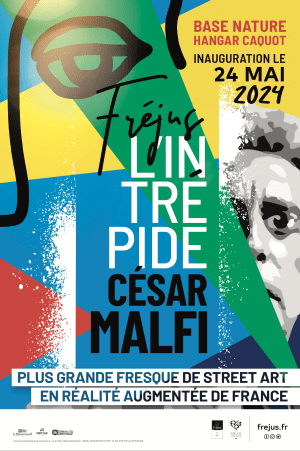Description
42 km long, 481 m fall, 36 arches in only 20 years of construction, the Roman aqueduct in Fréjus is an exceptional structure. For the curious, lovers of antiquity or contemplative poets it was and continues to be a source… of admiration. Victor Hugo himself wrote: “The new and complete aqueduct was probably beautiful two thousand years ago, but it was no more beautiful than this gigantic collapse spread over the plain, running, falling, rising. Ivy and bramble hang from all these magnificences of Rome and time”.
Ticket office
Share
Favourite
- In a wooded park near the city centre
- A testimony of the technical prowess of the Romans
- It was also a favourite of Victor Hugo
- The extension of the aqueduct on the Roman rampart
L'aqueduc : historique
The word aqueduct is a borrowed from the Latin aquae ductus, aqua (water) and ductus (canal).
The Romans were masters in routing water. However, the choice of the sector before settling there was made with great care: They only settled in a place if they found a sustainable water source. Indeed, water was a vital commodity for those who hoped to settle in the long term.
Designed in two stages, the aqueduct captured water from the La Foux source in Montauroux, then from La Siagnole in Mons.
The aqueduct starts at the foot of the limestone cliffs at an altitude of 515 m, then follows a route of about 42 km to Fréjus. It took the waters of the Siagnole from its source to the highest point in Fréjus, Butte du Moulin à Vent, 34 m above sea level, where there was a water tower (castellum divisorium).
36 aqueduct bridges were erected – 28 for the Reyran Valley alone. 2 km downstream of the source, is a special feature – Roche Taillée. A channel cut into the rock 50 m long and 20 m deep, a huge structure.
The construction of this aqueduct can be dated to the second half of the 1st century and the aqueduct was certainly in operation for over 400 years.
For safety and health reasons most of the aqueduct was underground
The duct or “specus” was usually built in masonry made up of small regular stones. Its dimensions were on average of 1.60 m high (average height of the Romans) and 0.70m wide.
Some arches were split along the route and so-called “Sénéquier” arches, two aqueduct bridges were built parallel a few meters away.
This prestigious monument, whose remains were listed as a Historic Monument on 12 July 1886, has been subject to numerous restorations and consolidations since 1941 and again recently in 2018 with the two piles of the Sainte-Croix arches.
This is what Victor Hugo said in his travel diaries in October 1839, when he was in Provence:
“In three quarters of Fréjus, huge sections of ruins begin to appear here and there among the olive trees. It is the Roman aqueduct. The new and complete aqueduct was, no doubt, beautiful two thousand years ago, but it was no more beautiful than this gigantic collapse spread over the whole plain, running, falling, rising, sometimes with three or four arches half buried in the earth, sometimes throwing an isolated and broken arch to the sky or a monstrous buttress standing like a Druid menhir, sometimes standing with majesty at the edge of the road with a large semicircle leaning on the two cubic massifs suddenly transfiguring into triumphal arches. Ivy and bramble hang from all these magnificences of Rome and time.
In 1894 on Cours Chevalier at the time, now place Paul Vernet, the Fontaines des Quatre Parties du Monde commemorates the return of running water to Fréjus; in 1870 an imperial decree laid down the conditions for sharing of waters from the Siagnole once again captured. A good part of the Roman aqueduct was used for this.






